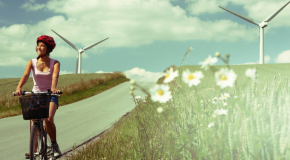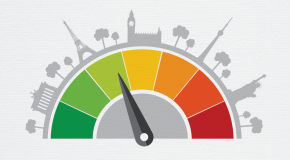Poor rural communities across Africa, South Asia and Latin America are mostly communities for whom an affordable and reliable connection to a national electricity grid remains a distant dream, who have to forage for wood or dung for cooking fuel and whose evenings are lit with the smoky wick of a crude kerosene lamp.
Around the world 1.2bn people are without electricity and 2.8bn[i] cook over open fires being enacted on the ground. But we have the technologies to deal with this challenge, as I have witnessed first-hand over a trip to Bolivia and Peru in November 2013. Improved cook-stoves, for example, reduce fuel consumption dramatically and eliminate harmful indoor air pollution. Solar panels, wind turbines and micro hydroelectricity installations provide off-grid electricity, not just to light people’s homes but to improve communications with the outside world, provide services for health posts and schools, and deliver energy for productive use, thus improving household incomes.
I saw a fascinating example of the latter in a tiny hamlet 4,000 metres up in the Peruvian Andes – a small electric spinning machine run off a solar panel. This tiny machine is helping women who produce yarn from alpaca wool to increase their productivity sixfold whilst at the same time increasing the quality of their product, leading to a threefold increase in the price it fetches at market. That solar panel incidentally also provides electricity to five homes for lighting and other domestic needs such as mobile phone charging and running a small radio.
Access to energy is an essential prerequisite for development and impacts on almost every aspect of life from comfort and the reduction of physical burden in the home, to the provision of public services such as health, education and security. It also enables people to communicate and connect with the outside world and to develop enterprises and new ways of making a living.
As I have seen in Peru and Bolivia, off-grid energy technologies will play a really important role in making this happen. Indeed, the International Energy Agency’s (IEA) analysis suggests that over 50% of the new installed domestic electricity capacity around the world over the next 16 years will have to be based on off-grid decentralised technologies if universal access is to be achieved by 2030[ii], in line with the United Nations’ (UN) goal. Although there are encouraging signs in Bolivia and Peru of local government beginning to invest in this area, more widely, and particularly in sub-Saharan Africa and South Asia, there is little evidence yet that new investment in off-grid micro hydro, solar and wind technologies is happening at anywhere near the rate required to end global energy poverty. Unless this changes, very large numbers of people will still be cooking over open fires and will lack access to any form of electricity in 2030.
This piece is part of a series managed by the Economist Intelligence Unit for the Energy Realities competition, sponsored by Statoil. To find out more about the competition, click here.
[i] United Nations, 2013, UN Sustainable Energy For All Initiative Global Tracking Framework Report.
[ii] IEA 2011, energy for All, Financing access for the poor, Special early excerpt of the World Energy Outlook 2011, Figure 5, page 22
The views and opinions expressed in this article are those of the authors and do not necessarily reflect the views of The Economist Intelligence Unit Limited (EIU) or any other member of The Economist Group. The Economist Group (including the EIU) cannot accept any responsibility or liability for reliance by any person on this article or any of the information, opinions or conclusions set out in the article.




